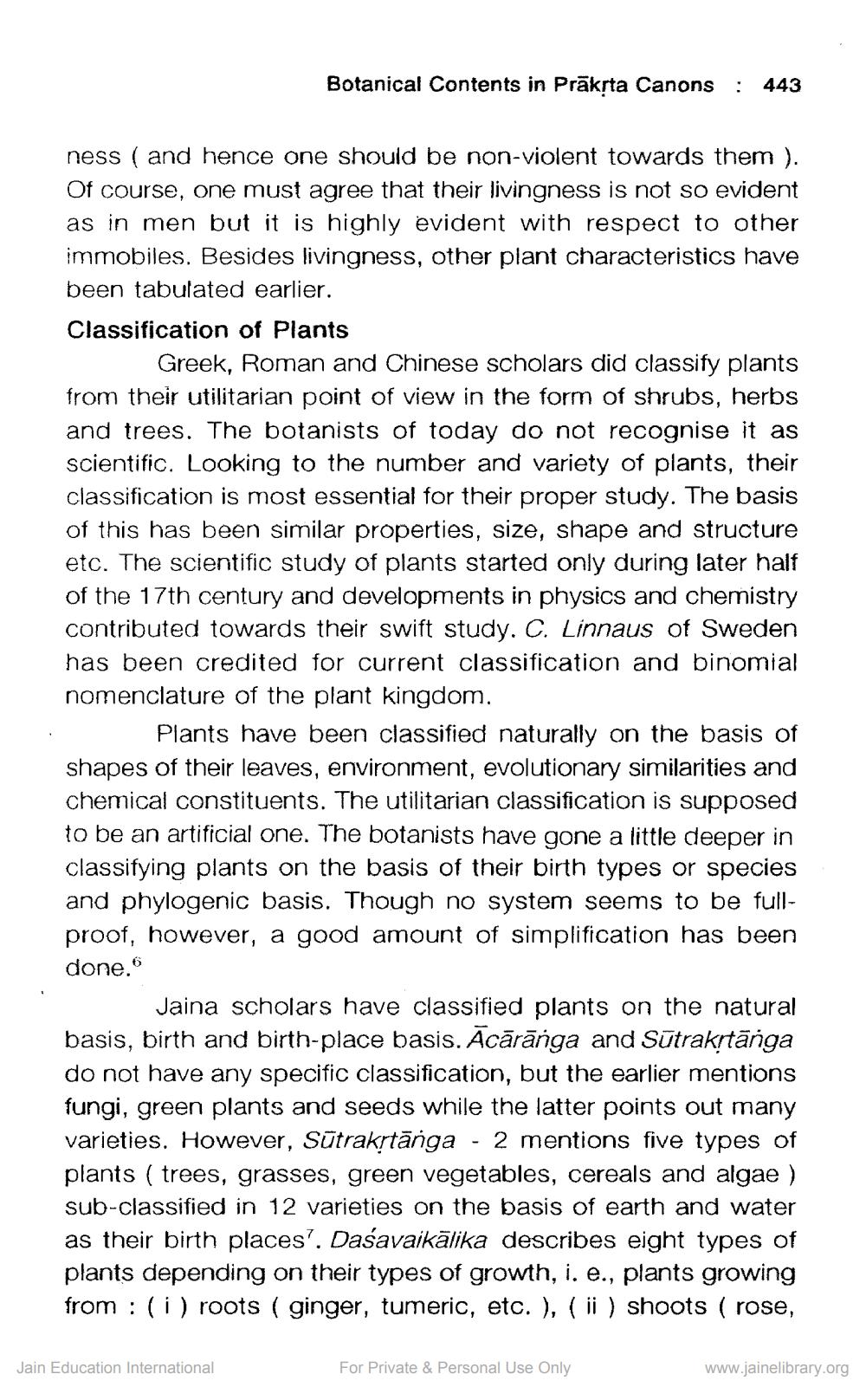________________
Botanical Contents in Prāksta Canons : 443
ness (and hence one should be non-violent towards them ). Of course, one must agree that their livingness is not so evident as in men but it is highly evident with respect to other immobiles. Besides livingness, other plant characteristics have been tabulated earlier. Classification of Plants
Greek, Roman and Chinese scholars did classify plants from their utilitarian point of view in the form of shrubs, herbs and trees. The botanists of today do not recognise it as scientific. Looking to the number and variety of plants, their classification is most essential for their proper study. The basis of this has been similar properties, size, shape and structure etc. The scientific study of plants started only during later half of the 17th century and developments in physics and chemistry contributed towards their swift study. C. Linnaus of Sweden has been credited for current classification and binomial nomenclature of the plant kingdom.
Plants have been classified naturally on the basis of shapes of their leaves, environment, evolutionary similarities and chemical constituents. The utilitarian classification is supposed to be an artificial one. The botanists have gone a little deeper in classifying plants on the basis of their birth types or species and phylogenic basis. Though no system seems to be fullproof, however, a good amount of simplification has been done.
Jaina scholars have classified plants on the natural basis, birth and birth-place basis. Ācārānga and Sūtrakrtānga do not have any specific classification, but the earlier mentions fungi, green plants and seeds while the latter points out many varieties. However, Sūtrakrtānga - 2 mentions five types of plants ( trees, grasses, green vegetables, cereals and algae ) sub-classified in 12 varieties on the basis of earth and water as their birth places'. Dasavalikālika describes eight types of plants depending on their types of growth, i. e., plants growing from : (i) roots ( ginger, tumeric, etc. ), ( ii ) shoots ( rose,
Jain Education International
For Private & Personal Use Only
www.jainelibrary.org




